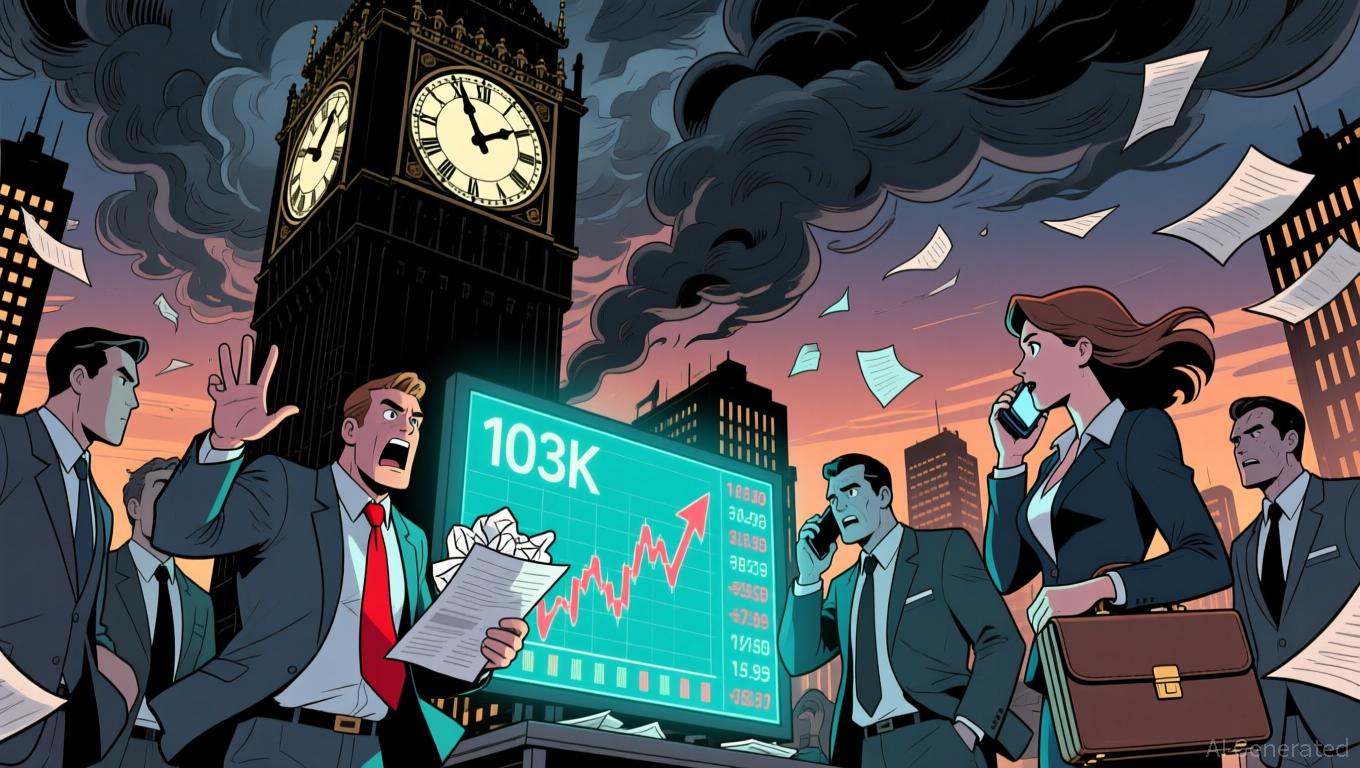Bitcoin News Update: Institutions Move $750 Million into Solana ETFs While Bitcoin and Ethereum ETFs Experience Withdrawals
- Solana ETFs (e.g., Bitwise BSOL) attracted $199.2M inflows in late October 2025, contrasting Bitcoin and Ethereum ETFs' $750M combined outflows. - BlackRock's IBIT offloaded $297.9M BTC while Ethereum ETFs lost $121.9M ETH, driven by institutional capital reallocation. - Analysts attribute Solana's growth to 7% staking yields, new products, and Hong Kong's first approved Solana ETF, signaling institutional adoption. - Bitcoin's $470.7M single-day outflow highlights macroeconomic sensitivity, despite $931
The crypto ETF market is experiencing notable divergence, as

This movement of funds points to a broader shift in institutional investment strategies. Market analyst Lark Davis, as cited by
Bitcoin's recent challenges mirror larger market trends. Even after a $931 million inflow spike following the Federal Reserve's rate cuts, as noted by
Solana's momentum is being propelled by favorable regulatory developments and ecosystem expansion. The approval of Hong Kong's first Solana spot ETF in late October, along with ongoing global applications for similar products, signals growing institutional interest, as outlined in a
These contrasting trends illustrate a maturing digital asset market, with investors increasingly diversifying beyond Bitcoin. Although Bitcoin ETFs still lead with $149.96 billion in assets under management, as reported by
Disclaimer: The content of this article solely reflects the author's opinion and does not represent the platform in any capacity. This article is not intended to serve as a reference for making investment decisions.
You may also like
Bitcoin News Update: Bitcoin’s Drop to $100k Highlights Short-Term Anxiety Versus Enduring Confidence from Institutions
- Bitcoin fell below $100,000 in Nov 2025 amid geopolitical tensions and profit-taking, wiping $1.3B in crypto liquidations. - Technical indicators showed bearish momentum, with whales selling 38.4k BTC while retail traders bought 415 BTC. - Michael Saylor predicted $150k BTC by year-end, citing institutional adoption, as investors shifted to altcoins like AlphaPepe. - Miners like MARA doubled Bitcoin reserves in Q3, but stocks dipped amid macroeconomic uncertainties and volatile price swings.

Vitalik Buterin Backs ZKsync: Driving Layer 2 Expansion and Unlocking Investment Opportunities
- Vitalik Buterin's endorsement of ZKsync's Atlas upgrade validates its technical innovation, boosting institutional interest and investor confidence. - The upgrade enables direct Ethereum liquidity access, achieving 15,000+ TPS and near-zero fees, positioning ZKsync as a key Layer 2 infrastructure. - Buterin's backing triggered a 120% token price surge and $600M market cap, highlighting its potential to dominate Ethereum's scaling solutions. - ZKsync's tokenomics overhaul prioritizes buybacks and staking

Zuckerberg: *The Social Network* Captured My Mannerisms, But Not My Life
- Mark Zuckerberg praised *The Social Network* for accurately replicating his Harvard-era casual style, including owned T-shirts and fleece jackets. - He criticized the film's narrative, calling its portrayal of his Facebook motivations and fabricated romantic subplot "completely wrong." - Zuckerberg highlighted Hollywood's struggle to grasp tech entrepreneurship's intrinsic appeal, emphasizing real-world innovation vs. dramatization. - Despite narrative disagreements, he bought the film's iconic "Ardsley

Zcash Halving Scheduled for November 2025: Triggering Market Fluctuations and Attracting Speculative Investments
- Zcash's November 2025 halving will cut miner rewards by 50%, mirroring Bitcoin's deflationary model and tightening supply. - Historical data shows post-halving price surges, with Zcash's price rising 472% since October 2025 amid $137M institutional inflows. - Privacy-centric features (30% shielded supply) and speculative demand drive volatility, but regulatory risks and competition pose challenges. - Market dynamics highlight tension between scarcity-driven optimism and macroeconomic uncertainties affect
